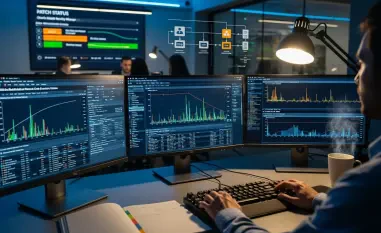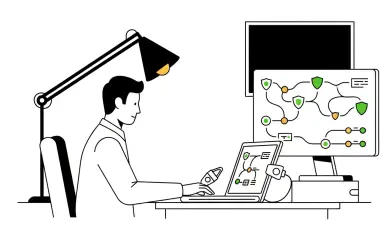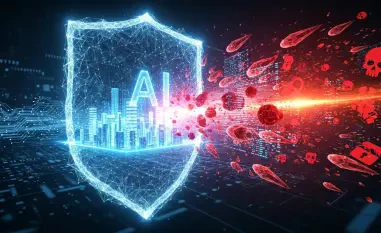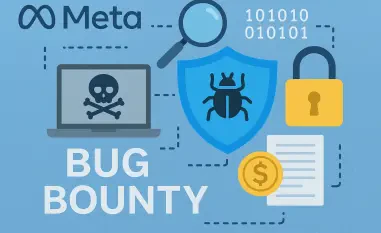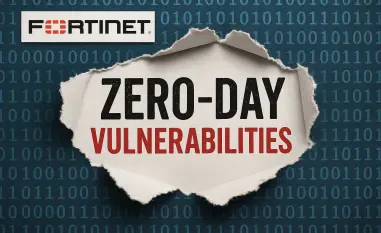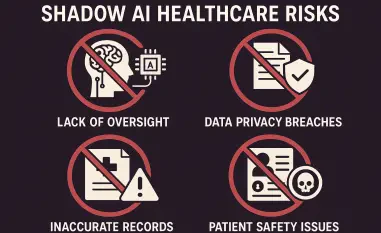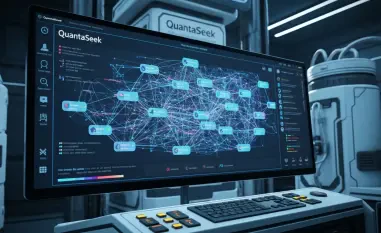Setting the Stage for a Cybersecurity Revolution
In an age where cyber threats strike with alarming speed and sophistication, the cybersecurity market faces a daunting challenge: over 40,000 new software vulnerabilities were identified in the past year alone, with organizations often taking weeks to remediate critical flaws while attackers exploit them in mere days. This stark disparity has propelled artificial intelligence (AI) into the spotlight as a potential game-changer for autonomous defense. A pioneering company has recently introduced an AI-based Cyber Reasoning System (CRS) that promises to detect and resolve vulnerabilities in real time, reshaping how the industry counters relentless digital threats. This market analysis delves into the transformative potential of AI-driven solutions, exploring current trends, data-driven insights, and future projections for autonomous cybersecurity.
The significance of this analysis lies in the urgent need to address the growing gap between attackers and defenders. As malicious actors increasingly weaponize AI to accelerate exploits, the market must adapt to keep pace. This examination aims to provide stakeholders with a comprehensive understanding of how autonomous defense systems are influencing cybersecurity investments, adoption patterns, and strategic priorities. By unpacking key trends and forecasting their impact, the goal is to equip businesses, policymakers, and professionals with actionable insights to navigate an evolving threat landscape.
Market Dynamics: AI-Driven Cybersecurity Trends and Insights
Rising Demand for Autonomous Solutions Amid Escalating Threats
The cybersecurity market is witnessing a seismic shift toward AI-driven autonomous defense systems, fueled by the escalating volume and complexity of cyber threats. Industry reports indicate that the global cost of cybercrime is projected to reach staggering levels in the coming years, pushing enterprises to seek faster, more efficient remediation tools. A notable player in this space has developed a system capable of autonomously detecting both known and zero-day vulnerabilities, addressing over 100 critical flaws in foundational software components like the Linux kernel and Apache stack during initial deployments. This capability underscores a broader market trend: the urgent demand for solutions that operate at machine speed to counter rapid exploits.
This trend is further amplified by the stark asymmetry in AI adoption between attackers and defenders. While malicious actors leverage AI to streamline attacks, often within five days of vulnerability discovery, organizations lag with remediation timelines averaging 45 days. Market data suggests that this gap is driving significant investments in autonomous technologies, with venture capital funding for AI cybersecurity startups surging by double-digit percentages over recent quarters. The push for automation reflects a strategic pivot, as companies recognize that manual processes and traditional tools are no longer sufficient to protect digital assets in a hyper-connected world.
Beyond investment, the market is also shaped by a growing scarcity of skilled cybersecurity professionals. With talent shortages hampering response capabilities, autonomous systems offer a scalable alternative, reducing reliance on human intervention. However, challenges persist, including concerns over false positives and the need for continuous system updates to match evolving threats. As the market matures, balancing efficiency with accuracy will be critical to sustaining trust in these emerging technologies.
Technological Innovations Shaping Vulnerability Management
At the forefront of market innovation is the development of comprehensive AI systems that redefine vulnerability management. Unlike conventional tools limited to anomaly detection, cutting-edge solutions now automate the entire lifecycle—from identifying flaws to generating, testing, and deploying patches. One such system creates fixes, validates them in dynamic environments like Docker images, and integrates updates into repositories, slashing remediation times from weeks to minutes. This end-to-end automation is rapidly gaining traction, with early adopters reporting significant improvements in operational resilience.
Market analysis reveals that these innovations are not just technological feats but also economic imperatives. The high financial stakes of data breaches, often costing enterprises millions, are accelerating the adoption of AI-driven defense mechanisms. Projections indicate that by 2027, a substantial portion of large organizations will integrate autonomous remediation into their security frameworks, driven by the need to minimize downtime and financial losses. This shift is particularly pronounced in sectors like finance and healthcare, where regulatory compliance and data sensitivity amplify the demand for robust, real-time solutions.
Despite the promise, market barriers remain, including the risk of automated patches introducing unintended errors and the complexity of integrating AI systems with legacy infrastructure. Vendors are responding by offering configurable autonomy levels, allowing businesses to tailor the balance between automation and human oversight. This flexibility is proving to be a key differentiator, catering to diverse risk tolerances and operational needs across industries, and is expected to drive wider market penetration in the near term.
Global and Sectoral Adoption Patterns of AI Defense Systems
Geographically, the adoption of AI-driven cybersecurity varies significantly, influenced by regional maturity levels and regulatory landscapes. North America leads the market, with high investment in autonomous defense systems fueled by a concentration of tech giants and stringent data protection laws. In contrast, regions like Asia-Pacific are experiencing rapid growth, driven by digital transformation initiatives and increasing cyber threats, though adoption is often tempered by budget constraints and skill gaps. Europe, meanwhile, shows a cautious approach, with emphasis on ethical considerations and compliance with frameworks like GDPR shaping deployment strategies.
Sectorally, industries with critical infrastructure—such as energy, government, and telecommunications—are prioritizing AI solutions to safeguard against nation-state attacks and ransomware. Market surveys highlight that these sectors are allocating larger budgets toward autonomous systems, recognizing their role in preventing catastrophic disruptions. Conversely, small and medium-sized enterprises (SMEs) face adoption hurdles due to limited resources, though configurable systems that offer hybrid models are beginning to bridge this gap, enabling cost-effective entry into AI-driven defense.
Looking ahead, market forecasts suggest a convergence of adoption trends as technology costs decrease and awareness grows. Collaborative initiatives, such as public-private partnerships, are likely to play a pivotal role in democratizing access to autonomous cybersecurity tools. Additionally, the rise of managed security services integrating AI capabilities is expected to support SMEs, leveling the playing field and fostering a more resilient global market. These patterns indicate a dynamic landscape where strategic alignment with regional and sectoral needs will determine competitive advantage.
Future Projections: AI as the Cornerstone of Cyber Defense
Peering into the future, AI is poised to become the bedrock of cybersecurity, with autonomous defense systems projected to dominate market share by the end of the decade. Predictive analytics and self-learning algorithms are emerging as critical enhancements, enabling systems to anticipate threats before they materialize. Market research anticipates that investments in these technologies will grow exponentially from 2025 to 2027, driven by the dual pressures of rising cybercrime costs and regulatory mandates for proactive defense measures.
Economic factors will further catalyze this shift, as the return on investment for AI solutions becomes increasingly evident. Autonomous systems not only reduce remediation costs but also mitigate the impact of breaches, offering a compelling value proposition for enterprises. Analysts predict that within a few years, fully autonomous frameworks could become standard in high-risk industries, though success will hinge on addressing ethical concerns and ensuring accountability in automated decision-making processes.
A speculative yet inspiring vision within the market is the concept of achieving a state of zero exploitable vulnerabilities—a goal that encapsulates the transformative potential of AI. While challenges like evolving attack vectors and integration complexities remain, the trajectory is clear: AI-driven defense is set to redefine industry standards. Stakeholders must prepare for a landscape where adaptability and innovation are paramount, ensuring that systems evolve in tandem with an ever-shifting threat environment.
Reflecting on Market Insights and Strategic Pathways
Looking back, the analysis of AI’s role in cybersecurity reveals a market at a critical juncture, where the adoption of autonomous defense systems has begun to address longstanding disparities between attackers and defenders. The comprehensive capabilities of emerging technologies, from real-time vulnerability detection to automated remediation, have demonstrated their capacity to enhance resilience across sectors. Moreover, the flexibility of configurable autonomy has emerged as a vital feature, fostering trust and enabling tailored adoption in diverse operational contexts.
Moving forward, stakeholders should prioritize strategic integration of AI solutions with existing security frameworks, focusing on hybrid models to build confidence in automation. Investments in staff training for AI oversight, rather than traditional manual processes, will be essential to maximize effectiveness. Businesses are encouraged to advocate for industry-wide standards that promote ethical AI use, while policymakers should consider frameworks that balance innovation with accountability. By aligning with these actionable steps, the market can harness the full potential of autonomous defense, paving the way for a more secure digital ecosystem in the years ahead.

